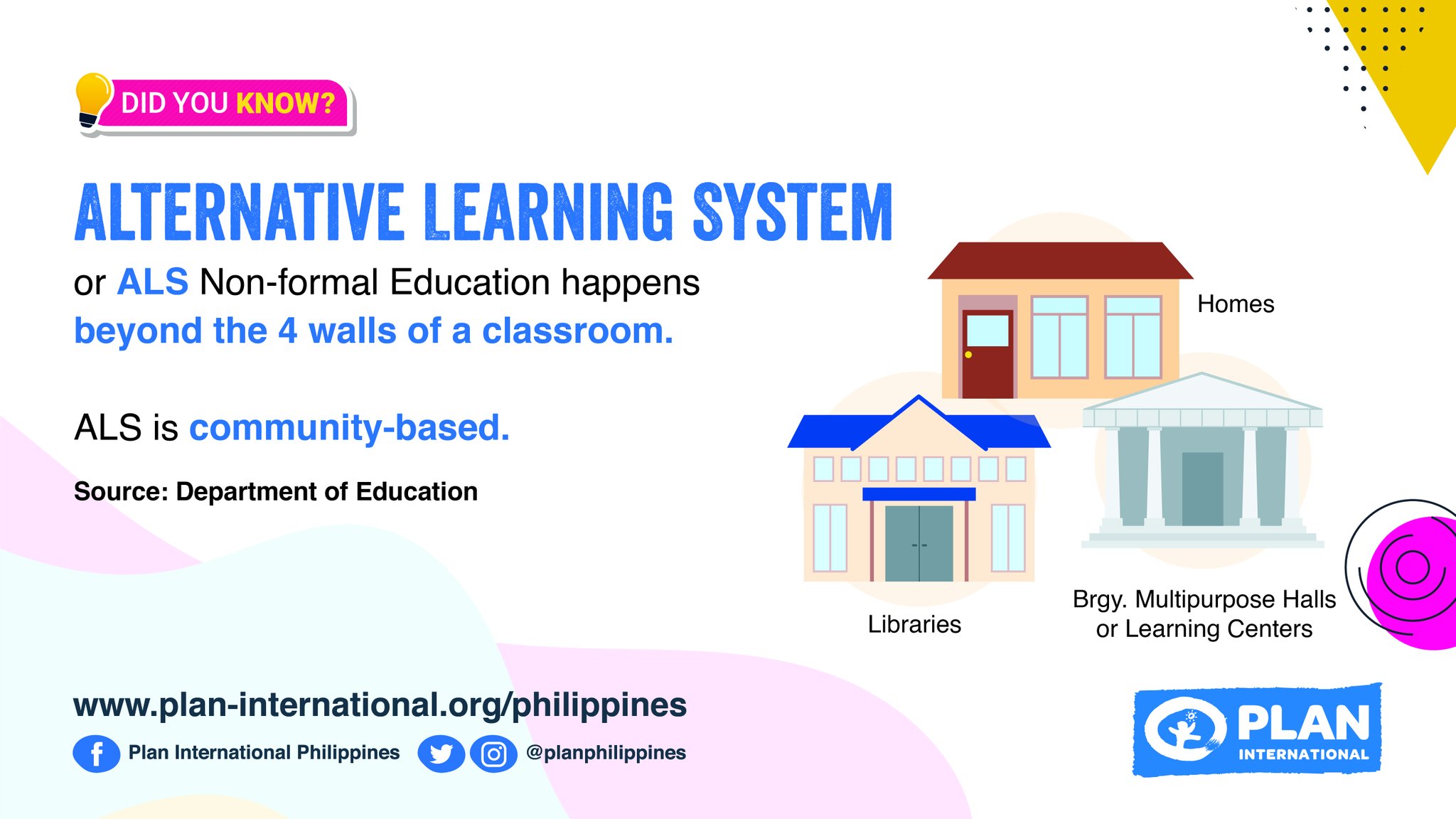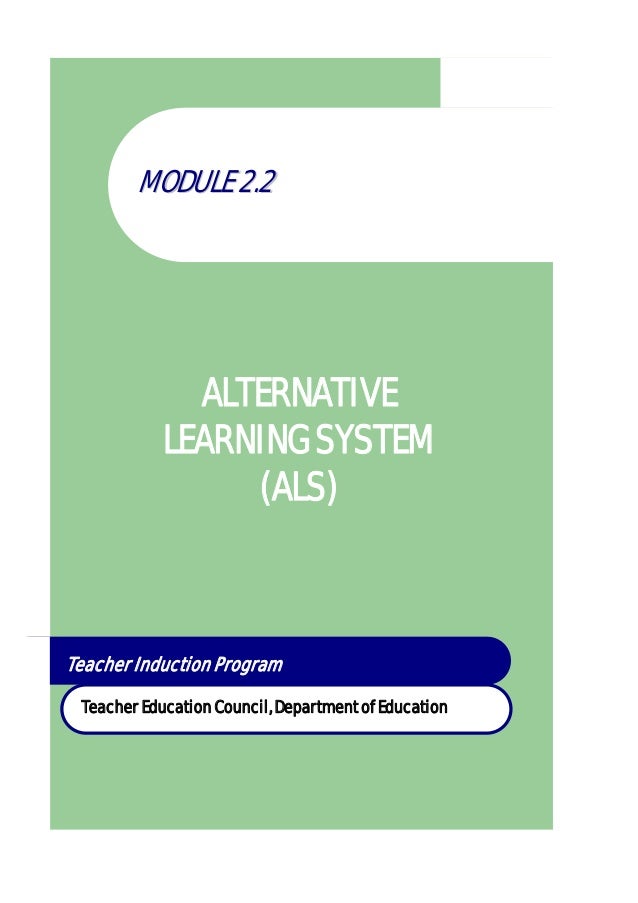ABOUTWhat is Alternative Learning System or ALS?It is a parallel learning system in the Philippines that provides a practical option to the existing formal instruction. When one does not have or cannot access formal education in schools, ALS is an alternate or substitute. ALS includes both the non-formal and informal sources of knowledge and skills.
Why is there a need for Alternative Learning System in the Philippines?
Many Filipinos do not have a chance to attend and finish formal basic education (Grades 1-6 and Year 1-4) due to many reasons. Some drop out from schools while some do not have schools in their communities. Since every Filipino has a right to free basic education, the Government establishes ALS to provide all Filipinos the chance to have access to and complete basic education in a mode that fits their distinct situations and needs.
What is the basis of ALS implementation in the Philippines?
The 1987 Philippine Constitution provides for the recognition and promotion of other forms of education other than formal education. Article XIV, Section 2, Paragraph (1) declares that the State shall establish, maintain and support a complete, adequate and integrated system of education relevant to the needs of the people and society; and paragraph (4) concisely encourages non-formal, informal and indigenous learning systems as well as self-learning, independent and out-of-school study programs particularly those that respond to community needs.
The Governance Act for Basic Education otherwise known as the Republic Act 9155 stipulates the establishment of the Alternative Learning System (ALS) to provide out-of-school children, youth and adults population with basic education.
How does ALS work?
There are two major programs on ALS that are being implemented by the Department of Education, through the Bureau of Alternative Learning System (BALS). One is the Basic Literacy Program and the other is the Continuing Education Program - Accreditation and Equivalency (A&E). Both programs are modular and flexible. This means that learning can take place anytime and any place, depending on the convenience and availability of the learners.
What is the difference between the Formal Education System and the Alternative Learning System (ALS) Non-formal Education?
Formal Education system is classroom-based, managed by trained formal school teachers.
ALS Non-formal Education happens outside the classroom, community-based, usually conducted at community learning centers, barangay multi-purpose hall, libraries or at home, managed by ALS learning facilitators, such as mobile teachers, district ALS Coordinators, instructional managers at an agreed schedule and venue between the learners and facilitators.









